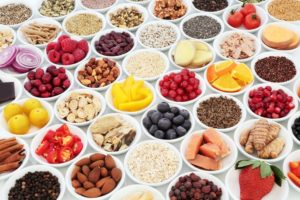

When fat particles, known as lipids, build up in the blood to abnormally high levels, it is known medically as hyperlipidemia, which is another term for high cholesterol. There are two major types of lipids found in the blood: triglycerides and cholesterols.
Cholesterols are used by every cell in the body. They are produced by the liver and can also be found in foods like red meat, eggs, and cheese. Triglycerides are formed in the body from extra calories that are unused when the body is burning energy. They are most commonly consumed from foods high in sugar, fructose, and fats, including alcohol, red meat, and whole-fat dairy.
Hyperlipidemia: Foods to Avoid
The first step in any cholesterol-lowering diet is to eliminate the foods that are likely causing the problem. Try to reduce your intake of saturated fats and trans fats, as these are the biggest culprits. The American Health Association recommendation of saturated fats are that they should make up no more than six percent of your daily caloric intake.
Foods high in saturated fats include:
- Fatty beef
- Lamb
- Pork
- Poultry with the skin on
- Lard and shortening
- Whole or reduced-fat dairy products
- Saturated vegetable oils (coconut oil, palm oil, palm kernel oil)
Foods high in trans fats include:
- Pre-packaged foods like cookies, cakes, donuts, and other pastries
- Chips
- Crackers
- Pre-packaged frosting
- Fried foods
- Buttered microwave popcorn
- Any products containing hydrogenated vegetable oils (margarine or shortening)
Foods to Eat for Hyperlipidemia
Just as there are many foods that can increase our cholesterol, there are also foods that can help us to lower it.
Stanols and Sterols: While these do not sound like something you would find at the grocery store, they are naturally occurring chemicals found in many grains, nuts, seeds, vegetables, fruits, and legumes. They interfere with the body’s natural cholesterol absorption, reducing your cholesterol level by up to 20 percent.
Monounsaturated and Polyunsaturated Fats: These are unsaturated fats. The best sources are in fish that are also high in omega-3s (so a win-win), but they are also found in chia seeds, avocados, almonds, walnuts, and olive oil.
Soy: Sources high in soy proteins include tofu, soy milk, and soybeans like edamame.
Fiber: Fiber is an important part of any diet, but when it comes to cholesterol, it acts like a sponge, removing the extra cholesterol floating around in the bloodstream. Foods high in fiber include whole grains, oats, beans, leafy green vegetables, and certain fruits with tough skin.
Spices: Seasoning your food with turmeric, red cayenne pepper, thyme oil, and ginger can help it to taste better and lower the level of triglycerides in your blood due to their ability to stabilize fat in the cell membrane.
Managing hyperlipidemia, or high cholesterol, does not have to be tricky business. A combination of avoiding foods high in cholesterol, like those high in saturated or trans fats, and consuming foods that help to lower cholesterol, like those high in soy and fiber, will have you back in a cholesterol-healthy place in no time.
Also read:
- Is cholesterol a lipid?
- Foods that lower triglycerides naturally
- 10 best essential oils for high cholesterol reduction